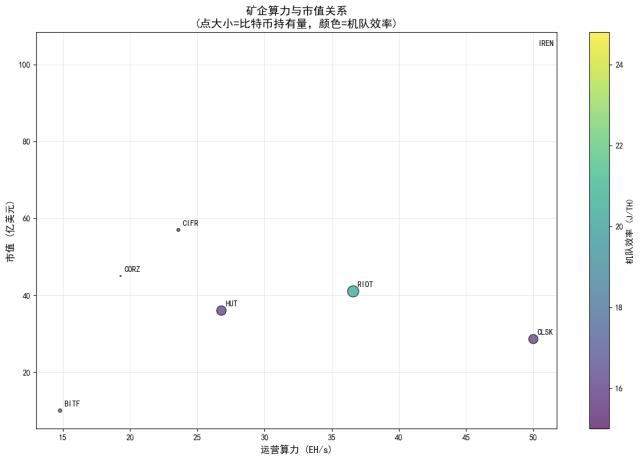Introduction
In simple terms, blockchain is a distributed digital database. Data is organized into blocks in chronological order, and these blocks are linked and secured through cryptographic verification. This technology is being widely adopted across various industries, transforming the way we work and live.
At the core of this concept is the idea that with the emergence of a secure, decentralized blockchain, people can maintain operations without relying on third-party networks or markets. However, experts generally agree that for widespread adoption to occur, this technology must first address a fundamental issue known as the "Blockchain Trilemma."
Vitalik Buterin, co-founder of Ethereum, popularized this term. Understanding this concept requires knowing the three key elements of blockchain: decentralization, security, and scalability. The "Blockchain Trilemma" refers to the challenge of achieving an optimal balance among these three attributes simultaneously. Strengthening one attribute often results in the weakening of another.
This article will delve into the three elements of the trilemma, analyzing each in detail. By discussing each element and their interrelationships, we will gain a better understanding of the reasons for and manifestations of the Blockchain Trilemma. Additionally, this article will highlight several solutions proposed by developers.
What Is Decentralization?
By design, Bitcoin and other similar blockchain networks possess decentralization characteristics. The architecture of these networks is not managed by any individual or single organization; rather, it is maintained collectively by all participants. The network is open to all users, thereby dispersing control rather than centralizing it in one entity. Everyone can access the same data. If someone attempts to alter records for illicit gain, other participants have the authority to reject the erroneous data.
This operational model is complex. Taking the Bitcoin network as an example, it operates entirely without third-party control. We can compare it to banks in traditional financial systems, which establish trust between transacting parties and ensure the proper custody of all records. In contrast, the Bitcoin blockchain ensures that all information is validated before being added to the digital database through shared data. This creates a system that does not require third-party intervention.
Decentralization offers possibilities for the future of Web3. The current internet is in the Web2 phase, where websites and applications are primarily controlled by large companies, but content is created by users. Web3 represents the next evolutionary step. In the Web3 internet, individuals can take control of their data and online lives through decentralized blockchain technology.
However, it is important to note that the operation of these distributed systems necessitates a consensus among a large number of participants regarding the validity of all data. This requires information to be shared and processed, which can potentially lead to slower transaction speeds. Therefore, blockchain must possess scalability to process more data more quickly, a point we will explore further when discussing scalability.
Additionally, the realization of decentralization is contingent upon ensuring the security of the underlying blockchain. If the blockchain lacks security, hackers may manipulate data. This introduces the second element of the trilemma: security.
What Is Blockchain Security?
If a blockchain lacks security, then no matter how decentralized it is, it holds little value. A robust blockchain network must be able to withstand malicious attacks. Centralized systems are typically closed, allowing for a certain level of security, as the controllers can ensure that data is not tampered with. But how can security be achieved in a decentralized system where anyone can participate?
This is a complex topic. Taking Bitcoin as an example, the security of its decentralized blockchain is supported by cryptography and a consensus mechanism known as "Proof of Work" (PoW). From a cryptographic perspective, each block has a digital signature called a "hash." If any modifications are made to a block, the hash changes, which links each data block in an immutable way. Any attempt to alter the data will be quickly identified by other participants in the network.
The Proof of Work mechanism plays a crucial role in ensuring the security of the cryptocurrency ledger. While understanding the details of PoW can be complex, it suffices to know that network members validate new transactions and add them to the ledger through a process called "mining." This process requires immense computational power to solve mathematical problems and perform numerous hash calculations. Although the Proof of Work mechanism provides security, it is relatively slow, which leads to scalability issues.
Furthermore, the more participants (nodes) there are in the network, the higher the security. A larger number of participants means that the chances of a hacker gaining control over the system are reduced. This relates to the concept of a "51% attack," which occurs if an entity (or a group of hackers) controls more than 50% of the network's hash rate, allowing them to override consensus and manipulate data on the chain, such as executing a double-spend attack.
In summary, security is the foundation of a successful blockchain. If security is lacking and attackers can disrupt the system at will, then the blockchain loses its value.
What Is Scalability?
Scalability refers to the ability to increase the number of transactions a blockchain can process per second. For blockchain technology to serve a broader society or billions of users, scalability is essential. However, this remains a challenge many blockchains are still striving to solve.
The root of the problem lies in the fact that decentralization and security are core characteristics of blockchain, which are often prioritized. Decentralization is foundational to the blockchain concept, while security is a critical requirement for its success.
However, when decentralization and security are prioritized, scalability becomes a challenge. The transaction processing capacity of a single chain is limited. For example, centralized payment systems like Visa claim they can process 24,000 transactions per second because their networks are closed and not constrained by public nodes and consensus mechanisms.
According to a Bloomberg report from 2022: "As of September, Bitcoin could handle a maximum of only 7 transactions per second, while the second most popular Ethereum network is limited to around 15 transactions per second. Such speeds are almost unbelievable compared to traditional transaction systems."
As mentioned earlier, the way participants process information in a decentralized network and the characteristics of the Proof of Work mechanism impose limits on transaction speeds. If more people begin using blockchain technology, insufficient transaction processing capacity could lead to congestion in the network.
Why Does the Blockchain Trilemma Exist?
The most intuitive solution to the aforementioned issues is to reduce the number of participants to speed up network confirmations and data additions. However, doing so would lower the degree of decentralization, concentrating control in the hands of a few. Fewer participants also mean an increased risk of attacks, potentially compromising security.
Thus, the trilemma arises: in the fundamental design of blockchain, decentralization and security are closely interconnected, making scalability difficult to achieve. The relationship among these three elements is one of mutual constraint. So, how can scalability be advanced without compromising decentralization and security, or achieving both simultaneously?
Solutions to the Blockchain Trilemma
Currently, there is no one-size-fits-all solution to the trilemma. Given the importance of addressing this issue, the community has proposed a variety of different solutions, achieving varying degrees of success. Below are some popular solutions to help you understand the latest developments in this field.
Sharding
Sharding involves splitting a blockchain or other types of databases into smaller parts to manage specific segments of data. This approach alleviates the burden on a single chain to handle all network transactions. Each shard has its own blockchain and ledger, allowing it to process transactions independently, while a beacon chain or main chain manages interactions between different shards. Therefore, sharding is regarded as an upgrade solution for Layer 1 network scalability.
Various Consensus Mechanisms
A primary reason for the trilemma in the Bitcoin network is the Proof of Work (PoW) mechanism, which ensures system security but leads to slower speeds. In search of alternative consensus methods, Ethereum transitioned from PoW to Proof of Stake (PoS). In a PoS system, participants must stake (lock) their tokens to engage in transaction validation, eliminating the need for specialized mining hardware. This makes it easier and more convenient to increase the number of validators in the network. PoS is just one of many methods to address scalability challenges.
Layer-2 Solutions
Sharding and various consensus mechanisms are classified as Layer 1 solutions aimed at altering the underlying network design. Meanwhile, some developers are exploring solutions based on existing network structures, advocating for innovation at the Layer 2 level. Relevant examples include sidechains and state channels. A sidechain is essentially an independent blockchain that connects with the main chain, allowing assets to flow freely between the two while operating under different rules for acceleration and expansion. State channels, on the other hand, provide a means to remove transactions from the main chain, using smart contracts for user interactions without publishing each transaction on the blockchain. The blockchain only needs to record the start and end of the channel.
Conclusion
The blockchain trilemma limits the ability of blockchain technology to realize its world-changing potential. If a blockchain network can only process a small number of transactions per second to maintain decentralization and security, widespread adoption will be challenging. However, based on the latest solutions proposed by developers to tackle this issue, it is clear that blockchain networks must continue to advance technological innovation to achieve significant improvements in data processing capacity in the future.






